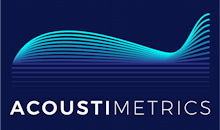
Home
News
History
FAQs:
Sales
Applications
Technical
Customizing
Transport
References
Gallery
Downloads
Release Notes
Tips & Tricks
Ordering
Contact us
Privacy policy
History of the Acousonde™
The first acoustic recording tags were applied in 1995 by a partnership of the University of California at Santa Cruz, the Woods Hole Oceanographic Institution (both supported by the Office of Naval Research), and the Monterey Bay Aquarium Research Institute. These experiments with northern elephant seals yielded surprising results, showing that the tags' acoustic records contained not only measurements of sound exposure, but of potential response indicators such as respiration and cardiac function as well.In 1999 the Office of Naval Research initiated support to develop a new acoustic recording tag, the Bioacoustic Probe, for transition to commercial availability. The goal of the instrument was to enable field biologists, especially those without access to engineering support, to study the individual acoustic sensitivity of a wide variety of protected marine species. This mission demanded miniaturization, reliability, and ease-of-use, in addition to the essential data acquisition functionality. A new computer platform was designed, a new operating system was created, and application software was written for both the tag and for the Palm personal digital assistant used to command it. The original website for the Bioacoustic Probe may be viewed here.
Between the first application of the Bioacoustic Probe as a seafloor recorder in March 2001 and the sale of the last remaining demonstration unit in June 2008, a total of 43 Bioacoustic Probes were built and used in both bioacoustic and underwater-acoustic applications. The instruments have been attached to at least four species of whales, to northern fur seals, and to manatees, and have been implanted in a blacktip reef shark. They have been deployed as fixed autonomous recorders, as elements in arrays, and on a prototype underwater glider.
Despite its success, the Bioacoustic Probe was hampered by low maximum recordable frequency (7.4 kHz in warm water, 3.7 kHz or less in colder temperatures) and a slow infrared data-transfer rate that required days to offload the instrument's full capacity. Its low frequency range particularly impacted its applicability to odontocetes (dolphins, porpoises, sperm whales, and other toothed cetaceans) whose echolocation clicks could not be fully recorded.
In 2006, the Office of Naval Research initiated a second development contract. This contract supported redesign of the Bioacoustic Probe to enable wideband acoustic applications, particularly with odontocetes. The resulting design effort culminated in the announcement, in January 2009, of the Acousonde™.